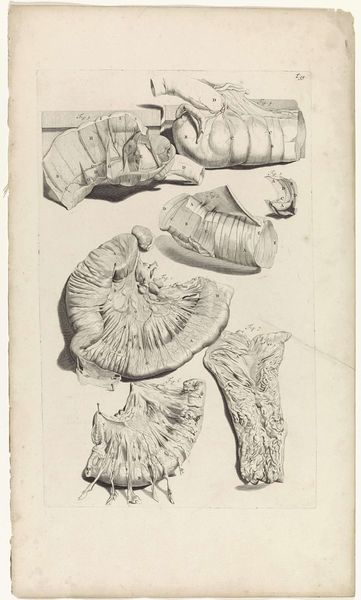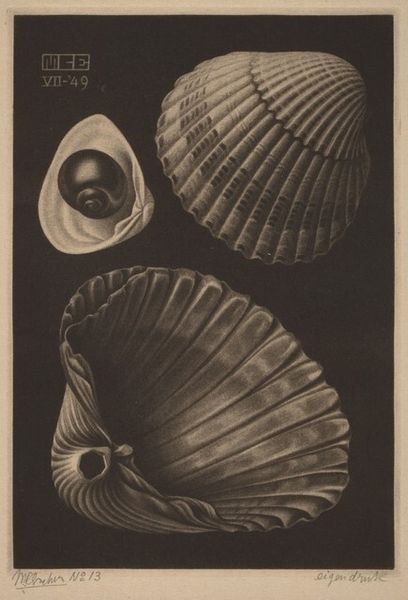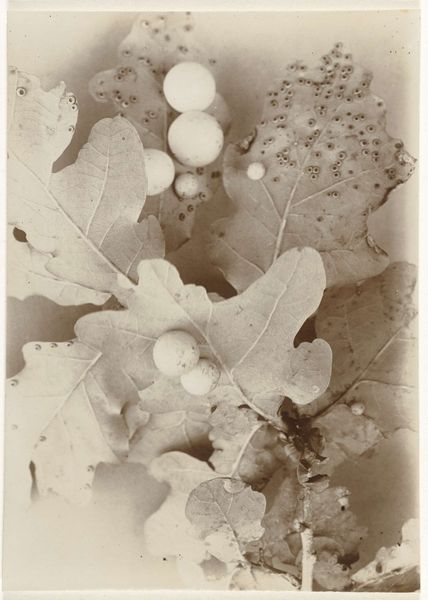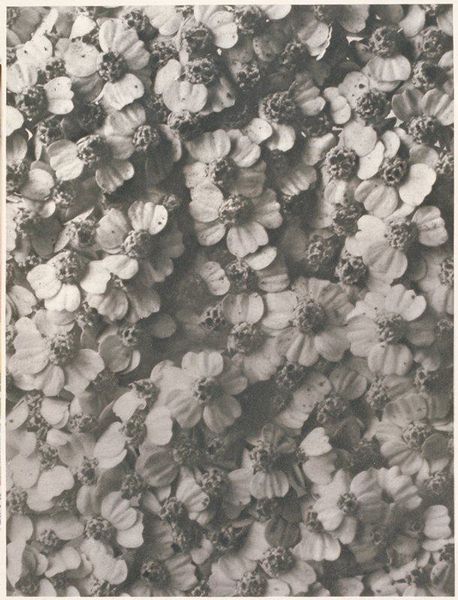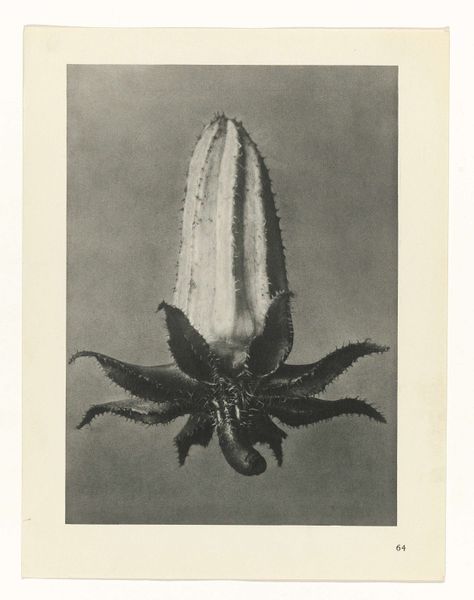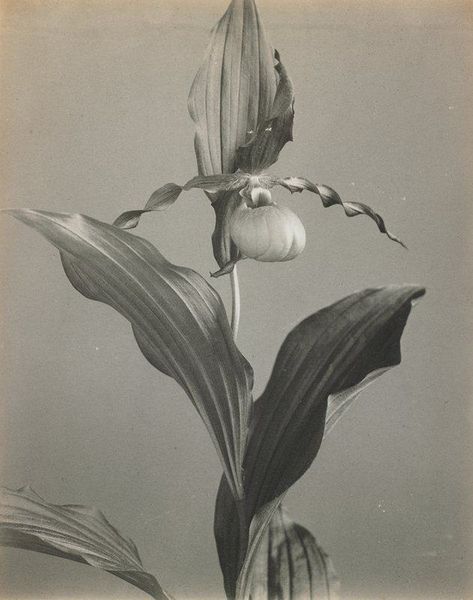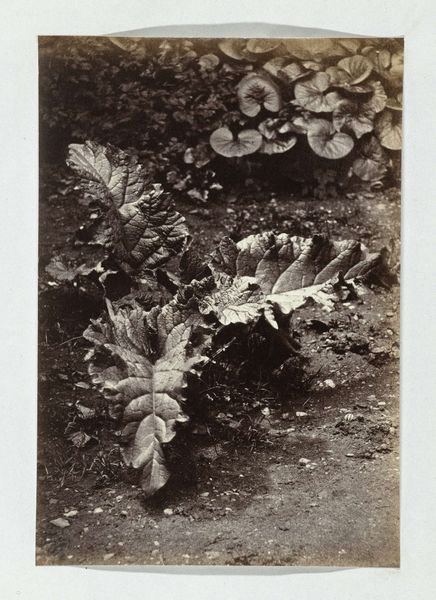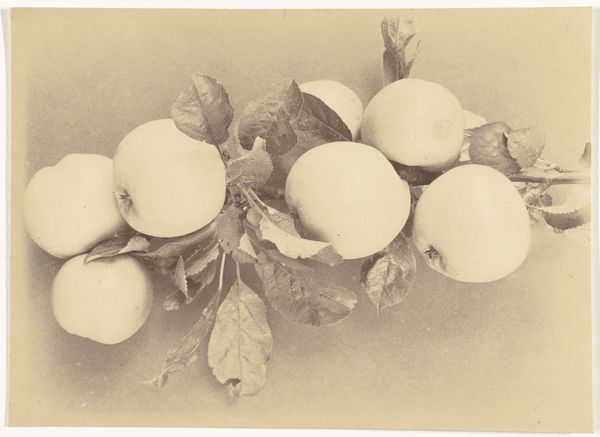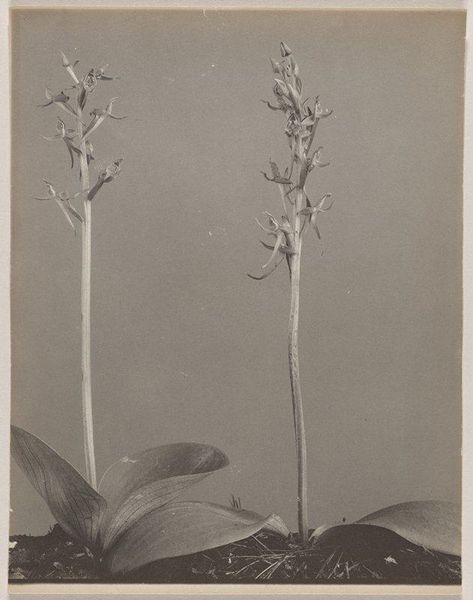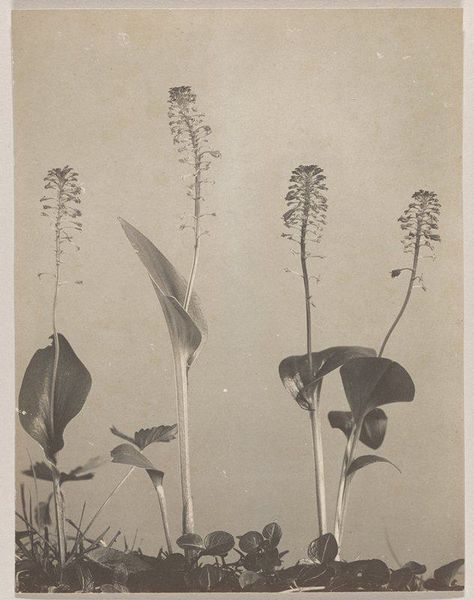
photography, gelatin-silver-print
#
still-life-photography
#
organic
#
landscape
#
photography
#
gelatin-silver-print
#
united-states
#
line
#
watercolor
#
realism
Dimensions: 9 3/4 x 7 5/8 in. (24.77 x 19.37 cm) (image)9 15/16 x 7 11/16 in. (25.24 x 19.53 cm) (sheet)
Copyright: No Copyright - United States
Curator: This is Edwin Hale Lincoln’s gelatin silver print, “Habenaria orbiculata - Round-leaved Orchid,” created in 1931. It's part of the collection here at the Minneapolis Institute of Art. Editor: My first thought? Kind of eerie, actually! The stark grayscale and the overwhelming presence of these massive leaves... they almost feel like alien life forms rather than a delicate flower. Curator: The image resonates with the larger trend of still-life photography. But what I find intriguing is how Lincoln's focus on native plant species allows us to examine ecological and botanical legacies, especially given the increased pressures on biodiversity during the early 20th century. What does the act of photographing native plants, versus cultivating in a contained garden, reveal? Editor: Hmmm… I'm not sure I got all that. But if I imagine walking in the woods and stumbling on these oversized leaves—way bigger than my hand—there's a sense of discovering something hidden, maybe even a little dangerous. And there's almost an intimate, vulnerable feel… It's as if he's capturing the portrait of a personality in these organic forms. I think they seem kind of like the beginning of something that could soon take over, that’s the vibe I feel! Curator: I'm so intrigued that you're sensing something "dangerous," especially given contemporary discussions about ecology and place! One could see Lincoln's meticulous approach, which focuses the entire composition on just two giant leaves against a litter of smaller fallen leaves, as calling into question notions of land stewardship, conservation efforts, and who is able to control access. Editor: Okay, when you put it like that! It gives the impression of nature taking over everything… kind of overpowering. Also the grayscale—it just makes these leaves really striking. If this photograph was taken in color, I doubt I'd be so impacted. Curator: Exactly! And what can that artistic choice signal about constructions of naturalism and conservation, particularly within art? Editor: You know, I came in thinking this was just a straightforward photo of some giant leaves. But it makes you really reflect and observe differently, it also makes me wonder how artists like Lincoln can provide new perspectives that make you ponder. Curator: Absolutely, and understanding the artwork’s context encourages precisely those types of reflections. Editor: Right, I guess I’ll go have a good think about the environment now.
Comments
No comments
Be the first to comment and join the conversation on the ultimate creative platform.

